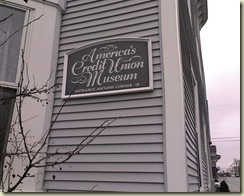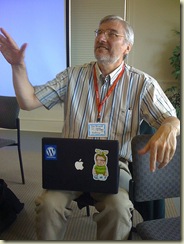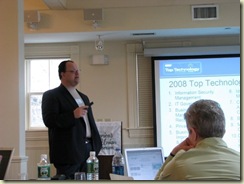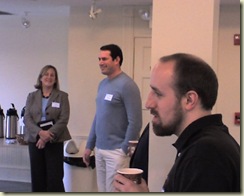
It has been much too long since I've posted here on The Loop. The past several weeks have been filled with exciting, but time consuming, progress as well as a bit of panic due to some hardware failures. Anyway, lets get to it.
The hot topic right now in most spheres of marketing is “how do we join the conversation?” Between Twitter, Facebook, Blogs, and all the other social sites that are enabling people to communicate in new ways we have our hands full. So, how DO you join the conversations that take place in these venues?
First, make a note, you can’t just start a Facebook page and hope people will be your friend. Take this past election for example. Every time McCain dropped “my friends” into a speech, twitter exploded with people replying “I’m not your friend!” You can be sure that you will get a similar response if you put up a Facebook page and try to be your members’ friend. As much as we’d like to be, we just aren’t their friend; we are their credit union.
People use these social sites because it offers them something. That might be a way to keep track of long time friends who have moved or are in school, entertainment, activism, etc. So, ask yourself this question before trying to get into the social media space, “what would this offer our members? What’s in it for them?” If you’re not providing something useful or engaging in the space you become just another advertisement that will be largely ignored.
The trick is to engage people and to show them that there is a person/people behind your logo. Be a person, do something that engages them and encourages their participation.
Don’t think this takes millions in your marketing budget either. There are so many great free tools and networks online that require little to no monetary investment. It just takes creativity, time, and knowledge of who your members are.
Here are a few simple things to remember when trying to engage your membership.
Get them involved
Let your membership feel like they are in control. Give them a space to interact with you, or be in the space that they are already conversing in. Encourage them to participate, and offer them something for their participation. Let them know that their input matters and that that this is their credit union (and in turn their website, and their branch, and their community).
Get them engaged
The best way to get your membership engaged is to actively participate in something. Maine State Credit Union just ran a photo contest that allowed people to submit their photos of “
Just a side note, running this contest cost almost nothing other than an investment of time and effort.
Start Conversations
Be a person, talk like a person, and interact like a person. If you are running a contest, or any other campaign geared to encourage member participation, try to be personal. Strike up a conversation. Make a comment on their participation. As an example, many of the photos that came in during our contest here at Maine State Credit Union were of places that I have been and it was actually quite fun to start conversations about those areas of our state. Find a common ground with your members and be a person they can identify with through conversation.
Join Conversations
There are some very easy, and cheap, ways of tracking what is being said about your credit union. Set up Google Alerts and keep track of what is happening online. If somebody posts a blog that mentions your name (especially if they are an existing member) leave a comment and join that conversation. If you want your members and potential members to be engaged with you, you need to be just as engaged with them.
Be a Person
Sign your blog posts with your name, not your credit union’s name. During your interaction with members online, be personal and avoid canned email responses. There is always something you can comment on or say that can really break down that “us vs. them” feeling that usually comes with an email from a financial institution.
So, be creative, be a person, and have fun with it. Find the tools that best fit your goal of engagement and be an active participant in your community. Show them that you are there because of them and that they are the ones that make the credit union go ‘round.











.jpg)














